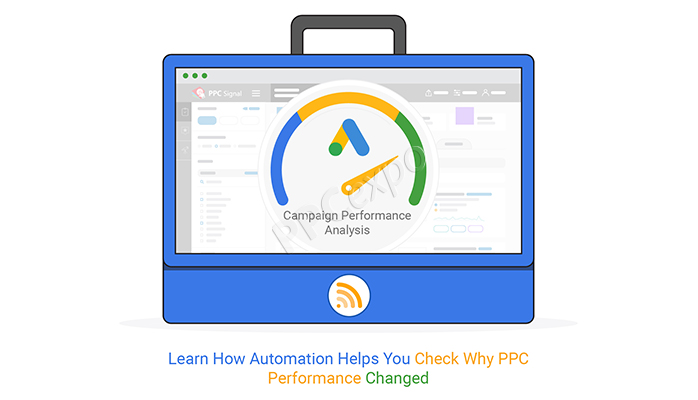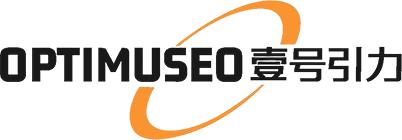Your Google Ads account performance is being affected, but you don't know the reason because you don't have a proper understanding of PPC campaign optimization strategies.
– You need to focus on keyword intent correctly
– You need the right audience targeting
– You shouldn't overlook the right devices, right locations at the right time.
– You should generate combinations of metrics and dimensions to find patterns in complex data.
This is a daily challenge for every PPC manager. With so many moving parts in all activities, it's tough to pinpoint the exact root cause of performance shifts.
It may not always be performance loss; even positive shifts can leave you puzzled, wondering the source.
One of the best ways to keep a pulse on your account stable is to perform campaign performance analysis. This allows you to track your data at every step.
Unfortunately, the size, speed, and complexity of PPC data bring some analysis challenges to marketers. Getting accurate results from your campaign performance analysis can be very difficult and time-consuming unless you have the right tools.
Artificial intelligence technology is like a lifeline thrown into the sea of data that may overwhelm PPC marketers.
By automating the tedious part of managing marketing campaigns, marketers can focus on the data and quickly uncover the reasons behind the fluctuations in their account.
This discussion will focus on how automation helps you investigate the reasons for PPC performance changes and how to handle these findings.

How do you measure the success of your PPC campaigns?
Launching a pay-per-click (PPC) campaign is not the end; it's a beginning. You can think of your campaign as a ship on the water. Once it sets sail, you push away from the dock and head out to sea.
Throughout the journey, you need to focus on tracking and studying the progress of your ad campaigns.
You need to understand how to optimize PPC campaigns and measure their success and failure factors and make course corrections as needed to maximize your return on investment.
After all, you are the captain of the campaign!
There are several factors to consider.
Data Maturity
First and foremost, it's crucial to understand that data takes time to mature and become useful in measuring success.
Most PPC campaigns are built for the long term. Your ads may run indefinitely unless they are short-term or seasonal campaigns.
To measure success, you need long-term data. You can't use data from one week to guide your ad campaigns. You need to look at months or even years of data.
Likewise, you cannot compare the success of a new campaign to campaigns that have been running for months.
Data takes time.
Return on Investment
Arguably, the best overall metric to measure the success of a PPC campaign is return on investment. This is your return on investment. What you put into your ads, what you get out of that investment?
You want your ad campaigns to be profitable and not have high (or higher) costs to earn high profits.
Essentially, return on investment is a metric that measures your ad budget expenditures.
To maximize return on investment, you need to know what components are wasting your ad spend and which components are delivering the best returns. Then, you can eliminate waste and improve returns.
Key Performance Indicators
While return on investment is a good benchmark, there are many other metrics critical to the success of your ad campaigns. These are known as key performance indicators (KPIs).
KPIs are metrics closely related to your campaign goals. If you want to increase revenue, you need to look at conversion rates, conversion values, and other end-of-the-funnel data for PPC campaign optimization.
Once your data has matured enough, KPIs are the areas that you must pay attention to the most. You need to closely track changes to these data elements as they will directly impact your progress towards achieving your goals.
Tools
You don't have to measure the success of your PPC campaigns alone. There are many tools available to help you measure the effectiveness of your ad campaigns.
Even the Google Ads dashboard can be a valuable benchmark for tracking your performance.
You should familiarize yourself with these tools and identify which tools can provide the best assistance in tracking your performance.
When should you check your PPC campaign performance?
Optimizing PPC ad campaigns and reviewing the effectiveness of your ad campaigns is an ongoing process. In a perfect world, you would monitor your data 24/7.
Of course, this is impossible without the help of automation and artificial intelligence tools.
That being said, if you're manually reviewing the effectiveness of your PPC ad campaigns, it's crucial to check your strategies at certain times:
Throughout the Campaign
Checking the performance of your PPC campaigns as a client manager should be on your daily to-do list. Remember, your data is constantly changing; every interaction with your ads will cause your metrics to shift.
So, if you don't check regularly, you might miss out on valuable opportunities or potential harmful risks in your campaign.
Before Creating New Campaigns
You want to learn from past successes and failures and apply that knowledge to future efforts and campaign optimization strategies.
Before starting a new campaign, review your past efforts, see what worked, what didn't. Use these insights to formulate your new strategy and ensure it's on the right track.
When You Reach Deadlines
Every good goal has a time element. This puts you on a timeline to achieve that goal.
Do you want to see results in 30 days? 6 months? 5 years? Whatever timeline you set, you want to evaluate your performance at that point.
Assess your results and determine if you've successfully achieved that goal.
When Planning Overall Budgets
As we discussed with ROI, how you allocate your budget is a key factor in the success of your ad campaigns.
Whenever you are planning a PPC budget or adjusting funds in your campaigns, you need to check your performance.
You want to know where to put your budget and where to cut expenses, it should be part of your PPC optimization strategy.
What does Campaign Performance Analysis tell you?
The core purpose of campaign performance analysis is to help you understand what works and what doesn't. For PPC campaigns, you can apply this course in multiple ways.
Are you setting the right goals? Sometimes, PPC marketers have to adjust their goals after realizing that their initial goals aren't yielding the right results for their business.
Which campaign types and advertising channels are best suited for your company? Which ones should you remove from your strategy? You want to focus all your energy on the areas that have the greatest impact on your business.
Which products or services offer the highest ad value? Not all products are worth advertising, especially in terms of profitability. If your profit margin is low, you may not be able to offset the cost of advertising.
Which ad creatives generate the most clicks? PPC marketers should test and evaluate their ad copy and ensure they are not only identifying the most successful ads but also studying what makes them so effective. You can apply these insights to improve underperforming ads.
Which keywords produce the best results? Choosing the right keywords is the foundation of a successful PPC campaign. Keyword performance has many factors to consider. You need keywords with high search volume but low costs. High costs per click can hurt your returns.
Which landing pages are best for driving conversions? Your landing page is the final gateway between all-important conversions. If you generate a lot of clicks in your ad campaign but have few conversions, now is the time to evaluate poorly performing landing pages to understand why.
In summary, PPC performance analysis will help you identify the best and worst parts of your account.
How do you investigate account performance changes?
A typical campaign performance analysis will follow a series of steps. Having this structured process will make the investigation smoother. However, it still cannot beat automation.
Step 1: Know you have a problem
You need to actively monitor the performance of your ad campaigns to know if you have a problem.
It's worth reiterating that this "problem" may not be a problem at all. Positive changes in your account might indicate a valuable opportunity waiting to be uncovered.
Once you identify a change worth noting, you can start further investigation.
Step 2: Identify the starting point
You've detected a change, whether negative or positive. Now, you need to dive into the data to find where to start.
The catalyst for the change is not always apparent, as several factors may be at play.
You need to use your expertise as a PPC manager to determine where to start looking for answers.
Step 3: Deep dive into the data
After delving into your marketing activities to determine the source of the change and analyzing the starting point, you need to start delving deeper.
You must consider what changed, the factors that influenced the change, and how that change affected other areas of your ad campaigns.
Start at the campaign level and then delve deeper into the ad groups and even individual keywords.
This step will help you better understand the source. You may even draw some initial conclusions about the reasons behind the performance change.
Step 4: Investigate your metrics
In Step 4, you want to continue delving deeper into your account data. At this point, you can start looking at the individual metrics within the affected campaigns that you've identified.
Similarly, a single change may involve many different metrics. Therefore, it's a good idea to have a comprehensive understanding of how each metric is performing compared to normal.
Looking at your metrics will help you further understand the reasons behind the performance change.
Step 5: Top-down investigation
One of the best strategies for delving deeper into metrics is a top-down investigation. This starts with primary KPIs and then moves down through related metrics.
For example, you might initially compare conversion rates this month to last month. You find that you have fewer conversions now than in the past.
To find the reason, you must look at the factors driving conversions, such as click-through rates or conversion rates. If you don't find the answer there, you may need to look at factors driving clicks (click-through rates, impression counts, impression share, etc.).
You continue this top-down process until you find your answer.
Step 6: Bottom-up investigation
You can also investigate data using a bottom-up approach, which is essentially the opposite of the top-down method.
With this technique, you can start from the smallest elements in your account and then move up to larger pieces of the puzzle.
What's the difference? When going from top to bottom, you may miss some details because the overall averages are stable. On the other hand, a bottom-up investigation can even uncover the slightest changes that otherwise wouldn't be noticed.
Step 7: Utilize Analytics
Your ad campaign performance analysis shouldn't just look at your Google Ads data. Your website analytics are also a crucial component in resolving puzzles.
If your conversion rate is dropping, your Google Ads data won't provide the answer. You'll need to look at analytics to understand bounce rates, time on site, and other metrics. This will help you determine the success or failure of your landing pages.
To reduce bounce rates, you may need to develop new pages that are more relevant to the target keywords.
Step 8: Establish a timeframe
Timeframes are an element of analysis that marketers sometimes forget. We recommend starting with comparing two similar periods, such as this month to last year, or year over year.
Comparing one week to the next might pose some data accuracy issues. However, looking at several weeks consecutively or even comparing individual days' performance could be helpful. You might be able to pinpoint which days of the week are best for your strategy.
Time can help you discover when performance changes occur. You can use this information to identify the reasons. Perhaps there's a new competitor in the ad market, or maybe the changes made to your ad campaigns previously have yielded unexpected results.
How Automation Simplifies PPC Performance Check
Following all 8 steps of campaign performance analysis may require a lot of time and resources. If your Google Ads account is large, you may not be able to check every part, meaning some performance changes may go undetected.
You have the tools, data, and expertise needed to analyze all the variables and factors to find the root cause of performance changes. Automation brings much-needed relief from the tedious manual analysis and provides actionable insights on performance changes.
It's about making the most of your time by optimizing how you use it. As you optimize your time usage, your return on investment increases. You can focus on things that truly drive your performance metrics, such as driving more conversions and eliminating wasteful ad spend.
PPC Signal: The AI Solution for Your Campaign Performance Analysis
Once you set campaign goals, you'll begin monitoring metrics and making adjustments as needed. This creates a scenario for continuous improvement and growth.
However, with increasing account growth and adding more ad campaigns, it quickly becomes overwhelming. You have too much to do and too little time to effectively track it all.
You need help.
PPC Signal is an AI-powered management tool for your PPC campaigns. It automatically fetches real-time data from your campaign metrics and returns actionable signals, alerting you to performance changes.
Essentially, PPC Signal provides continuous campaign performance analysis for your account.
Why do PPC marketers need this tool?
PPC Signal's automated system tracks and monitors your campaign's performance changes. The tool does this for you and only flags the changes that are most worth your attention.
Agile Detection of Performance Changes
With PPC Signal's system, you can quickly zero in on account areas that need immediate attention, whether it's positive opportunities or harmful risks.
PPC Signal's agility is crucial to the success of its users.
For example, suppose the cost per click in one of your ad campaigns suddenly rises unexpectedly. You're suddenly paying twice the expected amount for each click. This not only impacts your return but can quickly drain your budget.
Such performance changes are overlooked daily, and you continue to overpay for these clicks and potentially waste your budget.
Timing also impacts the value of your PPC opportunities. If there's an emerging keyword gaining popularity, you want to be the first to capitalize on it. This allows you to take advantage of lower bidding costs and less competition until other marketers catch up.
Thanks to PPC Signal, you can mitigate risks and seize opportunities to ensure your growth remains stable.
Your Data, Your Signals
Every business is unique, and each has its goals. How you measure your performance is unique to you. Therefore, you should also have your method of campaign performance analysis.
PPC Signal doesn't change that. When you access the tool, it shows you every campaign signal in your account. Then, you can filter the results to find the changes most relevant to your goals.
PPC Signal won't change this. When you access the tool, it will display each activity signal in your account. You can then filter the results to find the changes most relevant to your goals.
Verified Actionable Insights
Automation should liberate you from your work, not add to it. However, many other management solutions stumble at this stage. They alert you to changes but often provide limited information about the cause or location of the change. You have to find this information yourself.
PPC Signal provides you with comprehensive and verified insights into every performance change that is actionable. Each signal comes with all the data you need to take action.
You don't have to analyze data and choose the best course of action. With PPC Signal's suggested actions, you can make quick changes to improve your account directly.
This is another way that PPC Signal offers actionable insights from start to finish.
This is helpful for new marketers who may not have the expertise to choose the correct next steps in the process.


